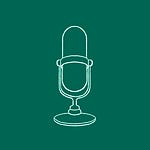Study hard what interests you the most in the most undisciplined, irreverent and original manner possible. —Richard P. Feynman
Hero #1: Lynne Farrow
She tells how the critical iodine supplement in bread is being systematically replaced with a toxin, bromide. It is a dark story, but the good news is that if you educate yourself about it, you can easily take enough iodine to improve your health. HERE is one of Lynne’s presentations.
Lynne Farrow was never very healthy, but when she was diagnosed with breast cancer, she started researching wholesome living. She writes:
Fear can make you jump onto the first available treatment conveyor belt and plod through the steps assigned to you, no questions asked. Worse, fear can make you believe in the six most dangerous words in the English language: They must know what they're doing. Those six words sustained me for about a month. Got cancer? Step one. Find a well-known doctor at a major Metropolitan hospital. Done. Dr. B. was smart, kind, personable, detail-oriented, and open to my endless questions. You would think this partnership between patient and doctor would work out great, right? Well, no and yes. My relationship with the famous surgeon worked out fine right up to the point when she lied to me …
Lynne soon became more knowledgeable than her traditional physicians. For example:
At a local cancer conference, I asked a question of the doctor who served as Director of Breast Cancer Services at one of country's major cancer hospitals. "Does radiation therapy increase overall survival in breast cancer patients?" I asked this question because I had researched the medical literature and already knew the answer, which was, No. I was testing him to see if his information was reliable. His answer: "Radiation must increase survival because we do it at our hospital."
In her quest to understand and properly treat her breast cancer, Ms. Farrow eventually stumbled onto iodine. She began studying the history and uses of this critical trace element. It had a venerable history spanning thousands of years, and until the antibiotic era, it was regarded as one of the critical disease treatments and preventatives. It was put on skin to disinfect it, to treat breast diseases, and used on wounds to counter infections. Taken internally, it was known to produce healthy teeth, nails, and hair. It was known to be essential for proper energy, sexuality, thyroid health, and much more.
Since the body cannot produce iodine, it must be consumed. Lynne learned that since the 1970s, iodine use had been systematically curtailed. Although iodized salt is still available, once a package is opened, up to 90 percent of the supplement evaporates within a short time. Also, it is more difficult to absorb in the salt form than when supplemented in foods. Iodized salt is just enough to prevent goiter but insufficient for optimal health. It unfortunately contains aluminum, which promotes Alzheimer's and Parkinson’s Disease.
Until recently, bread had been fortified with iodine, but this was stopped around 1970. Lynne describes how this happened, "A 1970 conference report from the Food and Nutrition Board, National Academy of Sciences [NAS], titled 'Iodine Nutriture in the United States,' strongly hints that iodine in bread may not be safe and that iodized salt is superior… The function of the report appears to be to raise insidious questions disguised as public concern—Is iodate in bread dangerous?"
In Hormone Secrets, I wrote about how a few years ago the Academy was paid handsomely to do a similar hatchet job. They were trying to discredit the bio-identical hormones made by compounding pharmacies. The purpose seemed to have been to eliminate one of big Pharma's (tiny) competitors. I concluded that the prestigious NAS is full of pay-for-play whores like the rest of medical academics. Before I read Lynne's book, I had no idea they were so corrupt back in 1970.
Lynne continues, "By 1980, wild claims were published. The USDA [United States Department of Agriculture] reported in "The Fortification of Foods: A Review" that iodine as a disinfectant 'has long been known to be lethal…' and that Americans get more than enough iodine from non-bread sources, so [iodine] 'should be replaced whenever possible by compounds containing less or no iodine.'"
Next, in 1973, potassium bromate, a toxic anti-iodine, was substituted for the iodine formerly used in bread. This had the effect of purging the critical nutrient from our bodies. The UK banned this practice in 1990 and Canada did in 1994, but petitions to the FDA to get rid of bromate have been unsuccessful.
Within a few years, additional bromines from fire retardants increased our bromine exposures. Lynne says: "Fire retardant dust is the most grievous source of bromine; there are countless other sources that flow into our bodies from brominated vegetable oil in certain sodas, sports drinks and foods. We are surrounded with bromine and bromides, an insidious element known to sedate, to suppress the thyroid, disrupt reproduction and even cause mental illness. Bromine fire retardants are even found in breast milk. Bromide is banned in many countries but not in the US."
Breast cancer rates have risen since the 1970s—the same period that iodine consumption decreased and exposure to bromine increased. IQs are dropping, and thyroid and other diseases continue to worsen. Obesity might be another effect that is partly due to bromine poisoning of the iodine metabolic pathways.
Fluoridated drinking water, ubiquitous in the US but banned in most of the world, also depletes iodine absorption.
Iodine deficiency has been documented in large Chinese populations to cause dwarfism, poor thyroid function, and mental retardation. Correction has been successfully implemented through supplementation or, in some cases, using irrigation methods.
Women have more problems with low iodine consumption than men, and pregnancy and nursing require increased iodine consumption. The following stories from Ms. Farrow's book describe how deficient women respond to supplementation. They suddenly feel great—sometimes on the first day.
Patient story, Alice: breast calcifications, coldness, hair loss, Raynaud's Disease, all clearing up or resolved.
I started using iodine about 18 months ago when I decided not to get a stereotactic biopsy for suspicious calcifications. I took an iodine loading test. I was only slightly deficient, about 15 percent, but the doctor advised me to take 100 mg daily of Iodoral along with ATP cofactors in case of an early stage of cancer. About six months ago I had an ultrasound of the area and, after careful examination, there were no visible calcifications. I did not get a mammogram as I do not want to have one anymore, but I knew that the calcifications picked up on my last mammogram had also been seen on the ultra sound. Also, thermographs showed improvement and less inflammation in the area.
Iodine has done wonders for me. Fibrocystic disease is clearing up. I also think that I may have had a sluggish thyroid that was not picked up on blood tests as now my feet are no longer cold, my Raynaud's Disease has gone away and my alopecia (hair loss) is almost resolved. Now I am taking 50 mg of Iodoral a day as it will probably take another few years, to totally resolve fibrocystic disease. I took other measures that I researched but I think the Iodoral was the main player in my success. I hope my story helps others.
Patient story, Marla: Lumpy, sore, fibrocystic breasts resolve. Energy improves.
I want to tell you about my experiences with Iodoral. It has been the most beneficial product I have ever used. I have fibrocystic breasts, which my gyno described as just lumpy, sore breasts. He said it really doesn't hurt you, it just hurts. Well, I think that is bull. I started doing some research on my own, ended up going to a chiro for a back problem. She had me lie on my stomach to adjust me, and, wow, did my breast hurt! Well, that was the best day of my "health" life! My husband was the first one to notice a difference and link it to the Iodoral. In about three weeks, I just felt good. Really good. I had energy, I felt like going places and doing things. It was not a jittery caffeine energy; it was just what a normal 30-year-old should feel like. And my libido was back. That is what my husband noticed! Prior to the Iodoral, I just didn't want to be with my husband. But suddenly, I wanted to! And finally, on to my breast. My breast pain would start exactly 10 days before my period. And be very severe. On the second month, no pain before. None at all. And as long as I am on my Iodoral, it doesn't come back. If I am not on it, it comes back immediately. My mother had breast cancer at 38. I am now 35, I have taken control of my health, and I will not be a silent victim!
Reference: LynneFarrow.net
Hero #2: David Brownstein, MD.
Dr. David Brownstein: Thyroid, Iodine, Viruses and More
This 2022 podcast is an interview with David Brownstein, MD., author of the 2014 book Iodine: Why You Need It, Why You Can't Live Without It (the paperback costs $43, but the ebook is available HERE for $15). Listen to it at faster speeds. HERE is another of the doctor's podcasts.
Dr. Brownstein describes how he quit conventional medicine and became an expert in nutrition, bio-identical hormones, and other holistic therapies. He has lectured internationally and has written sixteen books.
Brownstein says people who live near the ocean or who eat a lot of fish get plenty of iodine. However, his Midwest area is known as the "goiter belt" because the soil is iodine deficient. So he helped develop a test for it and found that seventy percent of his patients had low iodine levels. When given iodine, a third can stop their thyroid medication, a third can reduce it, and only a third must continue at the same dose.
He says that if he had to leave functional medicine and use only one of his therapies, he would keep iodine because it helps the most people. In the video above, he also addresses fluoride, thyroid, and hormones. He describes why, contrary to accepted medical “wisdom,” there is a general salt or sodium chloride deficiency.
Four “halides” are important for humans—(sodium) chloride, fluoride, bromide, and iodine. Our levels of chloride* and iodine are grossly deficient, and we are being poisoned with fluoride in the water and bromide from many consumer products. Fortunately, if we take adequate iodine, it displaces bromide from our tissues and forces its urinary excretion. Unfortunately, this may not be the case for fluoride. *See the Appendix below.
Brownstein says we must do our homework for health issues. His motto is, “The best-educated patients get the best results."
What we can learn from censored sources
Although mistakes are often made in science and medicine, the following lends credibility to the idea that globalists are guiding the mainstream iodine narrative. For example, Wikipedia’s article "Iodine (medical use)" contains none of this information. WebMD’s write-up had none, either. It has been censored since it was sold to a huge investment firm in 2017. A third, Healthline, has the biased title, “Ten Uses for Iodine: Do Benefits Outweigh the Risks?" It says:
Given the wide availability of iodine in Western diets, thyroid health isn't typically impacted by low iodine levels in the United States… Despite the role iodine can play in disinfecting drinking water, there are also some concerns that it can increase the total iodine intake in humans and lead to adverse health effects (Yoho note: this is unreferenced). Total iodine intake shouldn't exceed 2 mg per day (This cites NIH sources, which are certainly captured).
The iodine truther community says twelve-and-a-half to fifty mg daily is the optimal dose of iodine for normal people. As Lynne learned with her breast cancer, glandular tumors such as breast, prostate, and thyroid can sometimes be suppressed using several hundred milligrams daily. But for most people, Dr. Brownstein recommends starting with 25 mg every morning. See the references and the dosing recommendations below to learn more.
Should you simply buy some iodine and start taking it? On a hazard-to-benefit ratio, it seems like an excellent idea. If you take too little, it works poorly, and if you take too much, it gets excreted in the urine if your kidney function is normal. The only problem that occasionally occurs is getting "hyper" or "revved up." Savvy patients rely on their personal responses to adjust their doses.
Feeling better can be nearly instantaneous or take weeks. If you have thyroid issues, seek supervision from an experienced practitioner who knows about iodine. Brownstein says that he can successfully manage Graves and Hashimoto’s thyroid diseases using larger doses of iodine.
He rarely resorts to radioactive iodine, which is the “standard of care” for these conditions. This is used to partially or wholly destroy these diseases’ hyperactive thyroid, but it unfortunately spreads throughout the body and causes long-term damage.
I had a formal consultation about my health with Dr. Ken Stoller. Among other things, he recommended a drop of "nascent" iodine every morning. That set me on the path to reading all I could and writing this post. I was soon taking six drops daily, and later increased my dose to 50 milligrams a day of other types.
It is disgraceful that this knowledge is not a part of standard medical training and practice.
Dosing
Several types of iodine are available. The bioavailability of each medication that follows is different, so the ideal milligram doses are not precisely equivalent. Additionally, people have varying needs for iodine, as some are deficient and others are not.
✪ Lugol’s solution was developed in 1829. Two drops of Lugol’s 5% Solution or five drops of 2% contain the equivalent of one tablet of Iodoral 12.5 mg. Lugol's 2% is readily available, but 5% has been restricted in the USA by our captured DEA since 2007. Up to one fluid ounce (30 ml) of Lugol's solution is exempt from this regulation.
✪ Lugol’s as a 12.5 mg pill: The Iodoral brand from Optimex contains 5 mg of iodine and 7.5 mg of potassium iodide. The doses recommended by some holistic doctors are 25 to 50 mg each morning.
✪ Nascent (the Magnascent brand and others) was developed in the 1920s. It is more expensive, palatable, and has a reputation for purity and reliability. There are 400 micrograms, or 0.4 mg, per drop. This is a small dose, but if you are deficient, a few drops can have a significant impact on you. I started slow and increased the amount I took.
✪ SSKI (saturated solution of potassium iodide) was developed in the 1800s and contains 0.05 grams (50 mg) per 0.05 milliliters. A milliliter is equivalent to a gram, and a third of a milliliter is approximately 300 milligrams.
Lynne emailed me this concluding comment: “I don’t think you can overdo iodine unless you’re feeling bad and then ‘that’s the bromide talking.’” She learned this through 15 years of study and interacting with online groups. Getting your dose right is an adjustment process that you should not rush. Read a lot and get knowledgeable help if you can find it. My Substack readers had more subjective improvement from iodine than anything else I wrote about.
References
Look at Lynne's book (cited above) first because of its readability and fascinating story. It sold over a million copies and has been translated into eight languages. Also see:
✪ www.BreastCancerChoices.org and LynneFarrow.net. Her Breast Cancer Think Tank is HERE. Iodine is one of their recommended strategies. She is also the editor of Iodineresearch.com.
✪ At the Yahoo iodine group, you can learn from beginners, practitioners, and long-time iodine takers HERE.
✪ The Curezone Iodine Forum HERE is managed by its founders, Laura and Steve. They have had over 10 million hits.
✪ Iodineresearch.com
✪ Iodine: Why You Need It, Why You Can't Live Without It (2014) by David Brownstein, MD. He has YouTube videos, a website, and many books on Amazon.
✪ THIS reference is about the epidemic of iodine deficiency in US women of reproductive age.
HERE is a comprehensive post about this subject from Unbekoming’s Substack.
Experts to consult
There are many others.
✪ David Brownstein, MD (rumored not to be taking new patients, but you can try)
✪ Lynn Farrow recommends Dr. Buist, an expert holistic doctor in Wyoming, Michigan. Her websites are NaturalThyroidChoices.com and SteppingStonesLiving.com.
Appendix: more Brownstein
One of Dr. Brownstein’s most interesting insights was that the 1997 INTERSALT World Health Organization (WHO) study recommending low salt consumption for high blood pressure was wrong. It was a demographic study comparing population groups. These are some of the weakest “science” in medicine, and the authors purposefully threw away most of their data to obtain the wrong conclusion. These days, everything WHO is suspect, but this was before we knew about it.
Brownstein advises his patients, including hypertensives, to take several teaspoons of yellowish, unrefined sea salt daily. He recommends the Redmond or Celtic brands, which contain critical trace minerals. Unfortunately, the reverse-osmosis process commonly used to eliminate fluoride removes these from household drinking water, so we need to supplement.
Salt refined from today’s oceans contains mercury and other pollutants. Some recommend Pink Himalayan salt mined from salt laid down by the seas thousands of years ago, but others have questions about it. Redmond brand salt is from ancient seabeds in Utah and may be better.
Dr. Brownstein says salt improves patient health and does not raise blood pressure. HERE is a mouse study, and here is the link to his book, and HERE is an interview.
During the first Covid wave, Dr. Brownstein prescribed the same treatment protocol he used during the prior flu seasons:
✪ Vitamin A, 100,000 U a day
✪ Vitamin D, 50,000 IU a day
✪ Vitamin C. 1000 mg an hour at first
✪ Iodine 25 to 50 mg a day
✪ Inhalant nebulizers with .03 percent hydrogen peroxide (diluted from 3 percent) and one drop of Lugol’s iodine in the solution. It is used every two hours at first.
✪ Intravenous vitamin C is given to sicker patients.
Brownstein spoke about his therapies in this podcast, Redefining Medicine, with special guest Dr. David Brownstein.
His practice treated thousands of Covid patients, and only one died. Brownstein’s partner sent the man to a hospital, and the doctors there murdered him with Remdesivir. If you think this statement is over-the-top, listen to any of Scott Schara’s interviews in my archives. THIS is one.
My friend George had this to say about Brownstein’s protocol, “I’m just getting over the worst summer flu/Covid that I’ve ever had. I have been gargling and nebulizing povidine iodine for several days, which immediately made a difference. I am mega-dosing on vitamin C powder as well.”
If you can’t wait another moment to get more Brownstein, here is a podcast he did with Dr. Mercola. It was primarily about his viral treatment protocol above.
Parting Shots
Iodine and boron are vital:
#1. Jorge Flechas, MD, MPH, wrote, “We know from world studies that if you give iodine during pregnancy, the babies that come out are usually 20-30 points higher in IQ than their parents.” HERE is his speech explaining how iodine is critically important for women and the elderly to avoid cancer and other health issues.
#2. For accidental or wartime radiation exposure, adults of eighteen and older should take 130 mg of iodine a few hours before or as soon as possible after the event, then daily. This is two ccs of KI (potassium iodide) solution.
#3. The story about boron suppression HERE is nearly identical to iodine’s.












